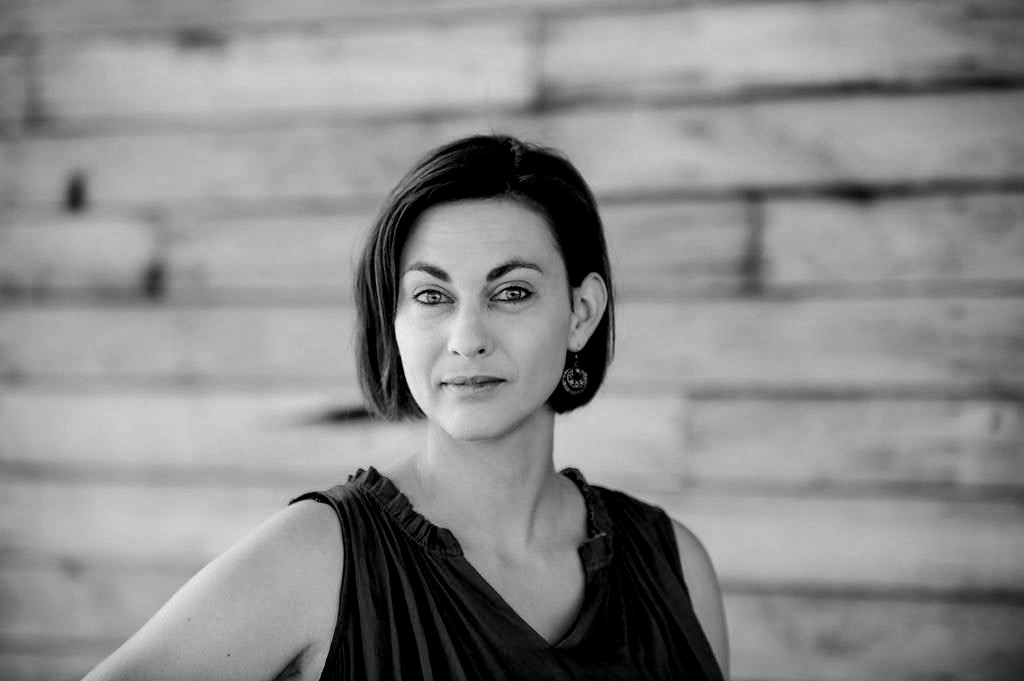
By Sandra Barnidge
I have become the proud keeper of an orchard. A real, living orchard. I am so thrilled about it I can barely breathe.
Begrudgingly, I can admit that perhaps my orchard is not yet especially picturesque—in fact, when I show images of it to friends and family, I sense the concern for my sanity in their responses. I suppose I shouldn’t really blame them, because at this particular moment in time, my orchard looks like this: twenty-four tall, black plastic canisters filled with dirt, arranged in rows in a red bin placed beneath a south-facing window in my temperate basement.
Ta-da!
Dig a little into one of those dirt cups, and you’ll come up with a smooth, black oval, an inch long, like one of those perfect flat pebbles destined for skipping across a pond. Some of the seeds still have a whiff of fermentation on them, a byproduct of the pulp they were shipped in to keep them moist on their journey from a homestead in central Georgia.
What the hell is that? My Wisconsin-based mother texts me back when I send her a picture of the seeds.
The future, I tell her, which doesn’t help.
My neighborhood happens to be adjacent to the oldest park in Northport, Alabama. That park includes three acres of green space, a free playground for young kids, and one of the most-rented community centers in the entire county. The center hosts family reunions, birthday parties, senior dances, and even the occasional wedding. The park and the center date back seventy years, but in June of this year, my local city council voted unanimously to seriously entertain an offer to pave over all of it, from a deep-pocketed developer with connections in Montgomery.
Condos, a parking lot, and maybe a drive-through coffee shop if we’re lucky. That’s what the developer is offering in exchange for the park.
When the news first broke, my neighborhood immediately spoke up in protest, and unlikely allies from all across this little city joined our cause. Libertarian farmers, football boosters, academics, and tree-huggers like me found common cause in trying to save the park. We circulated petitions, spoke at council meetings, and appeared in every media outlet that pays any attention at all to our neck of the piney woods.
But despite all that, only one council member, so far, has had a change of heart. And the sale of the park still looms over us, like a dark, gathering cloud.
For months now I’ve been thinking a lot about that three-acre park. Too much, probably. I ruminate, obsessively, over every development in the case. In all this thinking, I think, there is a seed of what I suspect is a bigger story. I can feel that seed in my hands, caked with the dirt of all the current drama, but I don’t quite recognize it yet. I can’t identify it, even as I stare right at it.
What the hell is this, I ask my husband every time a council member posts something threatening about the park on social media, which happens with surprising regularity.
A distraction, he tells me. Just an attempt to scare us off. I know he’s probably right, but hearing it still doesn’t help.
To keep myself busy between council meetings, I’ve been on a fall planting spree in my backyard. I’ve dug up various grasses to make space for fledgling starters: asters, coneflowers, star flowers, bee balms, lavenders—by next spring, this patch of blooms should attract a whole host of butterflies, bees, and hummingbirds.
I’ve made a special effort to bring more native Southeastern plants into the mix. And one night, I followed a gardening thread deep into a discussion of native fruit trees. Pawpaws, the thread suggested, would make a good addition to projects like mine.
What the hell is that, you may be asking.
Asimina triloba, the largest edible fruit native to North America. If that doesn’t help, think of a palm-sized papaya with green skin and creamy yellow-orange flesh. An overripe pear crossed with a persimmon. The texture of a banana with the aroma of a pineapple.
Or something like that, I suppose. I don’t know for sure, because I’ve never seen one in person, much less tasted it. But the very notion of the pawpaw, and the fact that this under-appreciated native fruit is currently making a major comeback in forests and gardens throughout the central South, compelled me instantly. I found a seed-seller on Etsy and placed an order for two dozen.
At the Northport Park, there are two-dozen crape myrtles with deep-red blossoms that line the brick walkway to a 1900s Victorian house that’s been converted into the perpetually closed Northport Heritage Museum. An additional fourteen white crape myrtles stand sentinel along the boundaries of the park, along with several big pines and one lone, young oak.
My house is slightly younger than the Northport Heritage Museum, but not by much. My yard’s lone crape myrtle is white, not country red, and it suffered mightily this year from a powdery mildew infection that has advanced into black sooty mold. I wasn’t attentive enough to the tree last spring to notice the early signs of white-flecked bark, to spray it with neem oil and stave off the worst. The infection has spread to the weeds I’ve let come up around the tree, but for now, I’m simply avoiding that particular corner of my yard and waiting for the cooler weather to kill the fungus.
Last year, I took two cuttings from the tree, which are now thriving little saplings. I offered one to a neighbor, but she declined it. She was too polite to say what I have finally figured out for myself: this particular variety is maybe not the ideal tree for our hot and humid yards. Without our active involvement in their survival, they do not thrive.
Better, for us, might be more resilient and adaptable species, with bigger, broader leaves and chemical compounds that make them mostly immune to the pests that dominate our red-clay soil.
Pawpaws, for example.
Here is what will happen to all those trees if my city sells the park: they will be paved over, along with the shrubs, the grasses, the clover, the phlox, the dandelions, and all the other species that currently live on those three acres of land.
Here is what can never grow in their place, on the rippling-hot pavement of a future parking lot: pawpaw trees, native bee balms, salvias, swamp sunflowers—or healthy children, like the ones who like to climb on the playground, or active seniors, like the ones who gather weekly for those dances at the community center.
Here is something important to know about pawpaw trees before you plant one or eat its fruit: too much of this good thing might not be the best thing for you. Pawpaw fruit is high in protein and nutrients like vitamin C, potassium, calcium, and more. However, the fruit also has a relatively high amount of a compound called annonacin, which deters insects but also might build up in our own bodies over time, if we eat far too many, every day, for many years.
While we don’t know for sure yet that this build-up is actually a problem, many foragers sense the pawpaw’s naturally short and aromatic season is a signal from nature that the fruit is best enjoyed in moderation. Better to eat a few pieces with delight and share the rest, rather than hoard for yourself the entirety of a mature tree’s bountiful harvest.
What are you really trying to say here? My noble editor asks.
There is a connection between my beleaguered local park and the dirt cups in my basement, I tell her.
I spent so much of my summer immersed in this local drama that sometimes, I look back and worry I haven’t been productive enough these last few months. But that’s just a brief resurfacing of an old mindset, a way of thinking I’ve long been training myself to bury over and over again until it’s smothered out for good: creative value is not yoked to a dollar figure. My time, energy, and attention can never be truly measured on a spreadsheet.
So while I don’t know yet if this real-life fight to save a local park will become a novel or a podcast or something else entirely, I do know that no matter what, my involvement has already been valuable. I’ve engaged it with my full attention and best effort. In exchange, the park has offered me a wide array of seeds for fresh creative ideas. I’m planting all of them now, in the equivalent of dirt cups in my imagination. For the foreseeable future, I’ll be tending them and watching to see which take root. When they’re strong enough, I’ll start transplanting the strongest of these idea seedlings to the page.
The fact that pawpaw trees happen to produce a fruit we humans consider to be a delicacy is not, of course, their sole purpose, the entire sum of their worth on this planet. Pawpaw leaves, for example, are the primary food of choice for zebra swallowtail caterpillars, which grow into striking black-and-white butterflies that are the ideal pollinators for blueberries, redbud trees, and various borage plants. We could try to put a price on all that value, but doing so would, of course, miss the point.
The people in charge of my city want to let a shared, public space be consumed by private development. And what they build will generate wealth that primarily benefits one man’s pocket, one man’s mouth—the park would become a greed-space, rather than a green one.
This is the future, I tell my daughter as she watches me drizzle water over the pawpaw seed cups in the basement. I try to explain that by taking care of these seeds today, we’ll also help lots of big butterflies many years from now that will pass through our yard.
She tugs my hand, tired of my talking, and we head out the back door and walk to the park.
If you’d like to join the fight to save a very old park in central Alabama, please consider supporting the legal fund.

Sandra Barnidge
Sandra K. Barnidge is an Alabama-based writer with a passion for small towns and overlooked places. Her fiction leans speculative and has appeared in Barren, Nimrod, The Fiddlehead, Reckon Review, Reservoir Ridge, and elsewhere.
sandrabarnidge.com

2 responses to “Buried Nitrogen: The Parallel Plot of Pawpaws and a Local Park”
Wonderful article I will definitely share. Northport needs more people like you to speak up against the corrupt goings.
Beautifully written essay about a terrible threat to our town. If only the city leaders had the inclination and/or intelligence to comprehend its message, the problem would be solved. In the meantime, we will continue to speak truth to power- as you have done here. Thank you, Sandy!